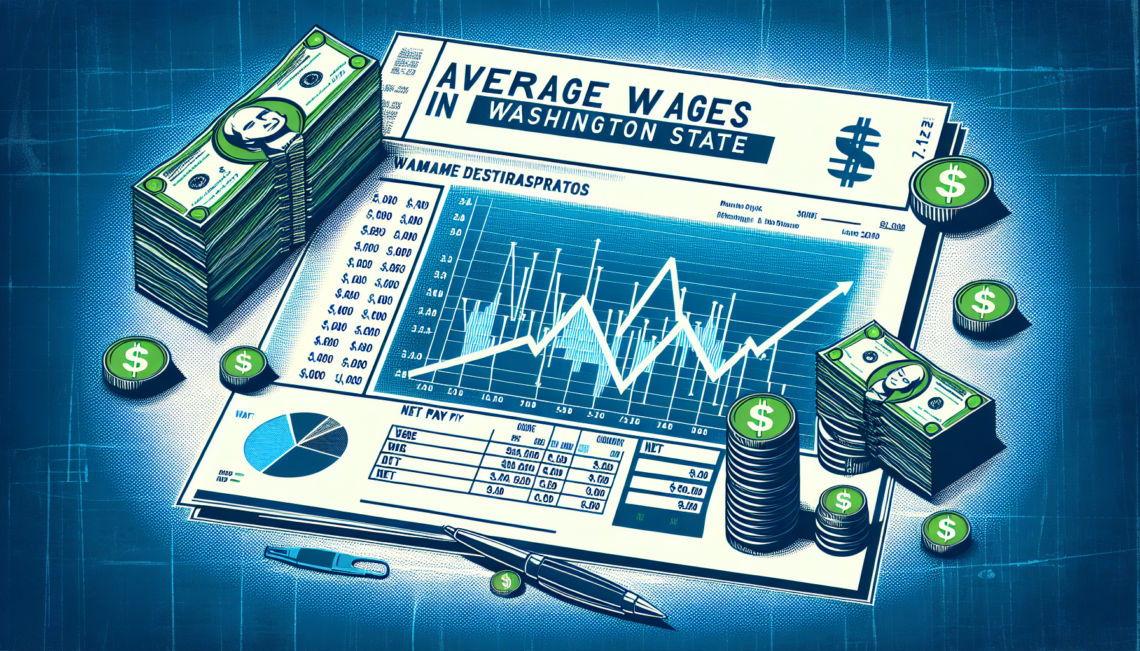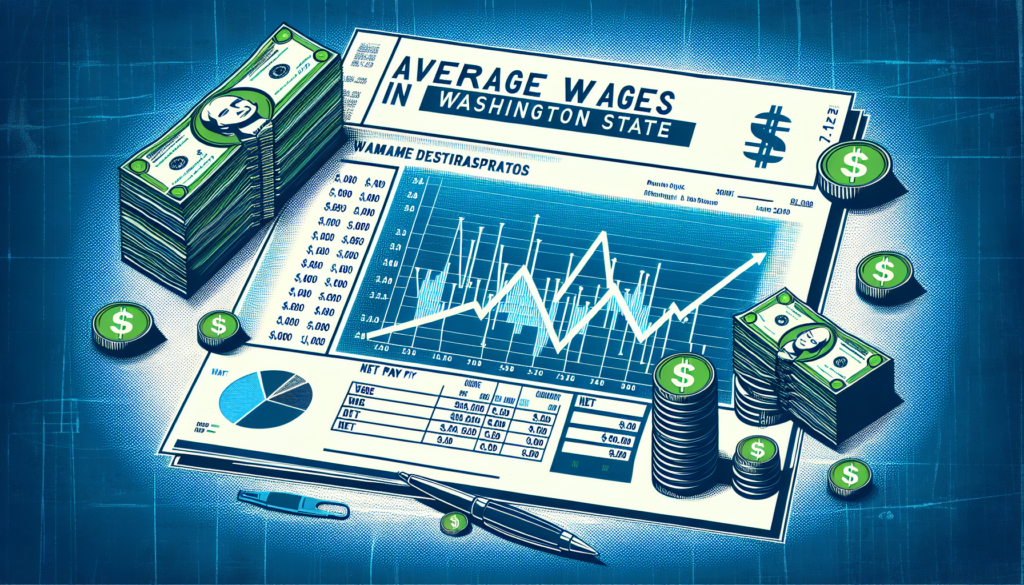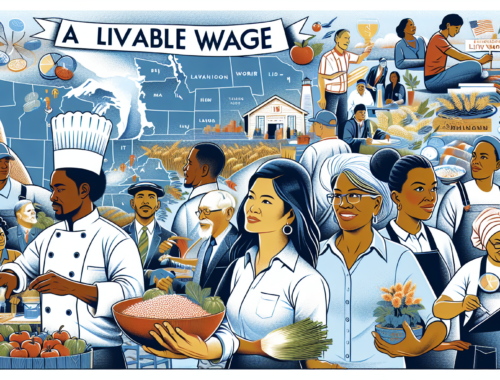
Understanding Washington State’s Average Wage
Have you ever wondered what constitutes a good wage in the state of Washington? If so, you’re not alone. Understanding Washington State’s Average Wage is an insightful article that aims to shed light on this exact question. By examining the factors that contribute to the average wage in the state, this piece offers valuable insights to help you comprehend the financial landscape and expectations in Washington. Whether you’re a resident or considering a move to the Evergreen State, understanding the average wage can provide you with a better understanding of economic opportunities and standards of living. Get ready to explore the intricacies of Washington State’s average wage and gain a fresh perspective on what a “good wage” truly means.
Table of Contents
ToggleUnderstanding Washington State’s Average Wage
1. What is Washington State’s Average Wage?
Washington State’s average wage refers to the mean income earned by individuals in the state across various industries and occupations. It serves as an important indicator of the overall economic health and prosperity of the region. Calculated by dividing the total wages earned by the number of workers employed, the average wage provides insights into the earning potential of individuals residing in Washington State.

This image is property of pixabay.com.
2. Factors Influencing the Average Wage
Several factors play a significant role in determining Washington State’s average wage. One crucial factor is the demand and supply dynamics within the labor market. When there is high demand for skilled workers and limited supply, employers often need to offer higher wages to attract talent. Additionally, the level of education and experience required for specific jobs can also influence the average wage. Industries that require specialized skills or advanced degrees tend to offer higher wages compared to those with lower skill requirements.
3. Historical Analysis of Washington State’s Average Wage
A historical analysis of Washington State’s average wage reveals interesting trends over time. Over the past decade, the average wage in the state has shown a steady increase, reflecting overall economic growth and improvements in the job market. This growth can be attributed to various factors, including advancements in technology, an expanding service sector, and a strong presence of high-paying industries such as aerospace and technology. Analyzing the historical data can provide valuable insights into the state’s economic progress and identify areas of growth and potential challenges.

This image is property of pixabay.com.
4. Comparison with National Average Wage
Comparing Washington State’s average wage with the national average wage offers valuable context and understanding. According to recent statistical data, Washington State has consistently boasted an average wage above the national average. This indicates that, on average, workers in Washington State earn more than their counterparts in other states. Various factors contribute to this higher average wage, including the state’s industry composition, higher cost of living in certain areas, and the presence of large multinational companies with well-paying jobs.
5. Industries with the Highest Average Wage in Washington State
Certain industries in Washington State stand out for their high average wages, providing individuals with lucrative employment opportunities. The technology sector, including software development, telecommunications, and data analysis, offers some of the highest-paying jobs in the state. Aerospace, with companies like Boeing playing a vital role, is another industry known for its well-compensated workforce. Additionally, healthcare, engineering, finance, and management positions also offer attractive average wages, providing a range of options for individuals seeking higher salaries.

This image is property of pixabay.com.
6. Industries with the Lowest Average Wage in Washington State
While some sectors offer high wages, it is important to acknowledge the industries that have lower average wages in Washington State. Jobs in the retail and hospitality sectors, such as food service and accommodation, generally have lower average wages due to the nature of these industries and the minimal skill requirements for entry-level positions. The agricultural sector, including farming and associated activities, also tends to have lower average wages. It is crucial to address these disparities and strive for equitable wage growth across industries.
7. Impact of Education and Experience on the Average Wage
Education and experience play a critical role in determining an individual’s earning potential and can significantly impact Washington State’s average wage. Higher levels of education, such as bachelor’s or advanced degrees, often correlate with higher average wages. Furthermore, individuals with more work experience in a particular field tend to earn higher wages compared to those with limited experience. It is important to recognize the value of education and continuous skill development to improve one’s earning potential and contribute to the growth of the average wage in Washington State.

8. Regional Variation in Washington State’s Average Wage
While Washington State’s average wage may provide an overall indication of income levels, it is essential to consider regional variations within the state. Certain counties or cities may have higher or lower average wages compared to the state average due to various factors. For example, areas with a higher concentration of high-paying industries or companies may have above-average wages, while regions with a more dominant agricultural sector might have lower average wages. Understanding these regional differences allows policymakers and stakeholders to address specific challenges and work towards more balanced economic development across the state.
9. Future Trends in Washington State’s Average Wage
Analyzing future trends in Washington State’s average wage requires considering the economic outlook, industry developments, and demographic changes. As technology continues to advance and automation affects certain industries, the demand for skilled workers may increase, resulting in higher average wages in these sectors. Similarly, industries related to sustainable energy, healthcare, and innovation are expected to grow and potentially offer higher wages. Additionally, addressing wage disparities and ensuring fair compensation across industries will continue to be a focus for policymakers, aiming to improve the overall average wage and provide economic stability for Washington State residents.
In conclusion, understanding Washington State’s average wage is crucial for assessing the economic landscape of the region. Various factors, including demand and supply dynamics, education, and experience, influence the average wage. By comparing Washington State’s average wage with the national average and analyzing regional variations, policymakers can identify areas of growth and address disparities. Industries such as technology and aerospace offer high average wages, while retail and hospitality tend to have lower average wages. Education and experience play a significant role in determining individual earning potential, and future trends point towards increased demand for skilled workers and potential industry growth. Striving for equitable wage growth and economic development across all sectors are important considerations to enhance Washington State’s average wage and promote prosperity for its residents.
You May Also Like

East Side vs West Side | Vancouver, WA – Which Side is BETTER?
19 October 2023
Exploring a Livable Wage in Washington State
14 January 2024





